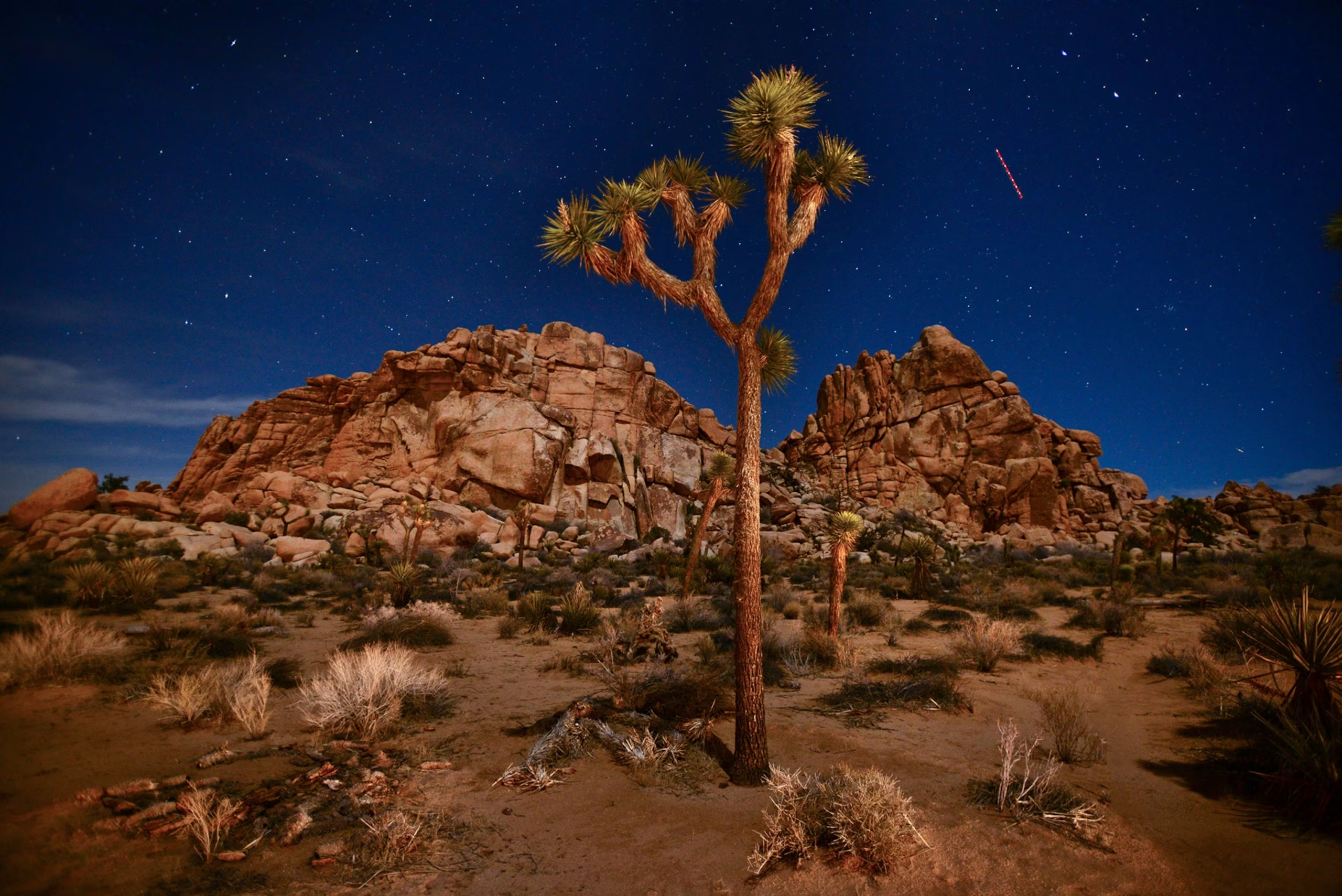We may earn a commission when you click on links across our website. This does not influence our opinions — learn more.
National Parks Near Las Vegas: Where You Can (and Can’t) Bring Your Dog

Most people come to Las Vegas for the casinos, the shows, the 24-hour everything.
But step outside the city limits, and you’ll find yourself within driving distance of some of the most spectacular landscapes in the country — red rock canyons, surreal desert valleys, alpine forests, and massive sandstone cliffs.
For dog owners, that makes Vegas one of the most strategic home bases in the U.S. to road-trip with your pup. That said, dog policies vary wildly from park to park. Some are wide open. Others barely let your dog out of the parking lot. Here’s how to plan around it.
Potential Government Shutdowns
As of October 2025, periodic U.S. government shutdowns have occurred, which can result in national park closures or severely limited services. Always check official park websites for operational status before traveling. During shutdowns, waste services, emergency rescue, and enforcement may be unavailable — making dog safety even more critical.
Death Valley National Park
- Distance from Las Vegas Strip: Approximately 2 hours (120 miles) by car.
Just two hours from Vegas, Death Valley might surprise you as one of the most dog-friendly national parks out there. You can’t take your dog on trails, but there are over 700 miles of backcountry roads open to leashed pets — far more than most national parks allow. These roads wind past salt flats, sand dunes, ghost towns, and surreal rock formations.
Popular drives like Artists Palette and Devils Golf Course double as quiet walking routes with sweeping desert views and zero foot traffic. The paved road near Furnace Creek Airport is great for a short stroll, while unpaved options like Stovepipe Wells Airport Road offer more space to roam.
Every campground in the park allows dogs, and you’ll find pet-welcoming lodging at places like Stovepipe Wells Village and Panamint Springs Resort. Just plan for early mornings or late evenings — temperatures here can hit 120°F, and the ground gets dangerously hot fast. In certain areas, dogs must remain in vehicles, which creates serious danger given extreme temperatures that can turn a car into a deadly oven within minutes.
Critical habitats such as watersheds and protected waterways are strict no-go zones for dogs, as even brief entry into water can result in severe ecological damage and legal consequences. Wildlife throughout Death Valley is strictly protected, and an off-leash dog chasing, stressing, or harming native animals like desert bighorn sheep can result in tragic outcomes for both the wildlife and your dog.
Zion National Park
- Distance from Las Vegas Strip: Approximately 2.5–3 hours (160 miles) by car.
Zion’s towering cliffs and deep canyons make it one of the most visited parks in the country, but also one of the toughest for dog owners. Nearly all of its iconic trails, from Angels Landing to The Narrows, are strictly off-limits to pets.
Your only real hiking option with a dog is the Pa’rus Trail, a 3.5-mile paved path that runs from the Visitor Center along the Virgin River. It’s scenic enough, especially around golden hour, but don’t expect solitude — it passes shuttle stops and can get crowded.
Dogs are otherwise restricted to developed areas like campgrounds and roads, and they aren’t allowed on the park’s shuttle system. Combine that with summer temperatures that often hit triple digits, and Zion becomes more of a photo op than a full-day adventure with a dog. If you do go, treat it as a quick detour or plan for a pet sitter nearby.
Joshua Tree National Park
- Distance from Las Vegas Strip: Approximately 3.5–4 hours (190 miles) by car.
Four hours from Vegas, Joshua Tree is a dream for dog owners who don’t mind ditching the marked trails. While dogs aren’t allowed on official hiking routes, they are allowed on all unpaved roads, and that opens up a lot.
Roads like Queen Valley, Stirrup Tank, and Geology Tour Road cut deep into the park’s boulder fields and yucca forests — great for exploring on foot with your dog while still following the rules. You’ll also find scenic walks along paved paths like Keys View and Oasis of Mara, both short but rewarding.
Dogs are allowed at campgrounds and picnic areas, and the wide-open terrain means you can usually find a quiet corner all to yourself. Just like anywhere in the desert, come prepared: pack water, avoid midday sun, and keep an eye on paws — there’s little to no shade out here.
Hot pavement and scorching desert conditions can cause fatal heatstroke in dogs, and leaving them in cars is absolutely prohibited as temperatures inside vehicles can become deadly in minutes. Never allow your dog near wildlife or in protected water zones, as both scenarios can have deadly consequences for the ecosystem and your pet.
Bryce Canyon National Park
- Distance from Las Vegas Strip: Approximately 4 hours (260 miles) by car.
Bryce Canyon’s hoodoos are otherworldly, but unfortunately, your dog won’t get to see much of them. Pets here are restricted to paved areas only, including the one-mile Rim Trail stretch between Sunset and Sunrise Points, plus the shared-use path near Inspiration Point and the park entrance. That’s pretty much it.
The views are incredible even from the paved lookouts, but for more freedom, most dog owners head just outside the park to Red Canyon, part of Dixie National Forest. Red Canyon has miles of dog-friendly trails and views that rival anything inside Bryce. It’s the better bet if you’re looking to hike and not just snap a photo.
Fines for rule violations can be severe, especially around water features or near wildlife corridors. Given how limited the pet-friendly zones are at Bryce, it’s worth knowing the rules before you arrive and considering alternatives like Red Canyon if you want a more expansive experience with your dog.
Grand Canyon National Park
- Distance from Las Vegas Strip: Approximately 4.5 hours (275 miles) by car to the South Rim.
The South Rim of the Grand Canyon is as bucket-list as it gets — and yes, you can bring your dog, but with limits. Dogs are only allowed on the 13-mile paved Rim Trail and in developed areas like parking lots and campgrounds. Trails below the rim, like Bright Angel or South Kaibab, are off-limits, so you won’t be hiking into the canyon with your dog.
That said, there’s a kennel near Maswik Lodge on the South Rim where you can leave your dog for the day if you want to do a longer hike or helicopter tour. It’s not a bad option, and several pet-friendly hotels in nearby Williams and Tusayan make it easy to base yourself outside the park if needed.
Never leave pets in vehicles or tie them up unattended, as Grand Canyon temperatures can become deadly within minutes. Allowing a dog off leash or entering restricted areas risks irreversible damage to wildlife and can result in enormous fines or criminal charges.
Great Basin National Park
- Distance from Las Vegas Strip: Approximately 4.5 hours (290 miles) by car.
Four and a half hours north of Las Vegas, Great Basin offers alpine forests, caves, and quiet skies — but very little dog access. Most trails are closed to pets, except the remote and rugged Lexington Arch Trail, which requires a high-clearance vehicle just to reach the trailhead.
You’ll get more value from the scenic drive up Wheeler Peak, which climbs through cooler elevations with epic mountain views. If you need care options while you explore, the nearby town of Baker has local boarding at Park A Pooch, with day rates and flexible hours. Great Basin is best for those looking to get way off-grid — just don’t expect much on-foot time with your dog.
Leash and area restrictions are strictly enforced here, and failure to follow pet rules not only endangers rare mountain wildlife but can also result in significant fines and, in some cases, criminal charges.
Sequoia & Kings Canyon National Parks
- Distance from Las Vegas Strip: Approximately 6–7 hours (370 miles) by car.
If your road trip takes you west toward California, these twin parks are home to the largest trees on Earth, and like most national parks, the rules are tight. Dogs are allowed in campgrounds, paved roads, and picnic areas, but not on trails.
Still, the scenery alone might be worth the stop. Even from the roadside, the sequoias are mind-blowing. Campgrounds here are peaceful in summer, and cooler temps make it more dog-friendly than desert parks — just know you’ll be sticking to the pavement.
Native wildlife and shoreline areas are especially sensitive in these parks, and severe penalties exist for allowing dogs in protected zones or near water features. The park service takes violations seriously due to the fragile ecosystems and the presence of endangered species, so it’s essential to stay within the designated pet-friendly areas at all times.
Critical Pet Safety and Legal Reminders
All national parks in this region enforce a 6-foot maximum leash rule everywhere dogs are permitted, and it is imperative to follow this restriction at all times. Retractable leashes that extend beyond this length are not allowed, as they create risks for wildlife and other park visitors. Leaving your pet alone in any vehicle, especially in desert parks, can be fatal in a matter of minutes due to rapidly rising temperatures. Even with the windows partially open, the interior can become dangerously hot far quicker than most people realize, resulting in multiple preventable canine deaths every year.
Park rangers are vigilant about enforcing pet restrictions not only to protect visitors and their pets, but also to safeguard fragile desert and mountain habitats that could be permanently damaged by roaming dogs. Breaking leash or area rules exposes dog owners to steep fines, prosecution, and, more importantly, the threat of causing irreversible harm to endangered landscapes and wildlife. Many sections of these parks contain watersheds, protected waterways, and reservoirs where just a single dog entering the water can bring bacteria, disrupt sensitive aquatic systems, and trigger legal action.
Along with legal concerns, there are significant risks to native wildlife. Most parks are home to animals such as desert bighorn sheep, deer, and federally protected species that can be severely stressed, injured, or even killed by loose dogs. Conversely, your dog could easily become a target for territorial or protective wild animals, resulting in tragic outcomes for both. It is never safe to assume your pet will stay out of trouble or tolerate the harsh park conditions — always research each location’s rules before visiting and make your pet’s safety and the preservation of these remarkable destinations the top priority.



